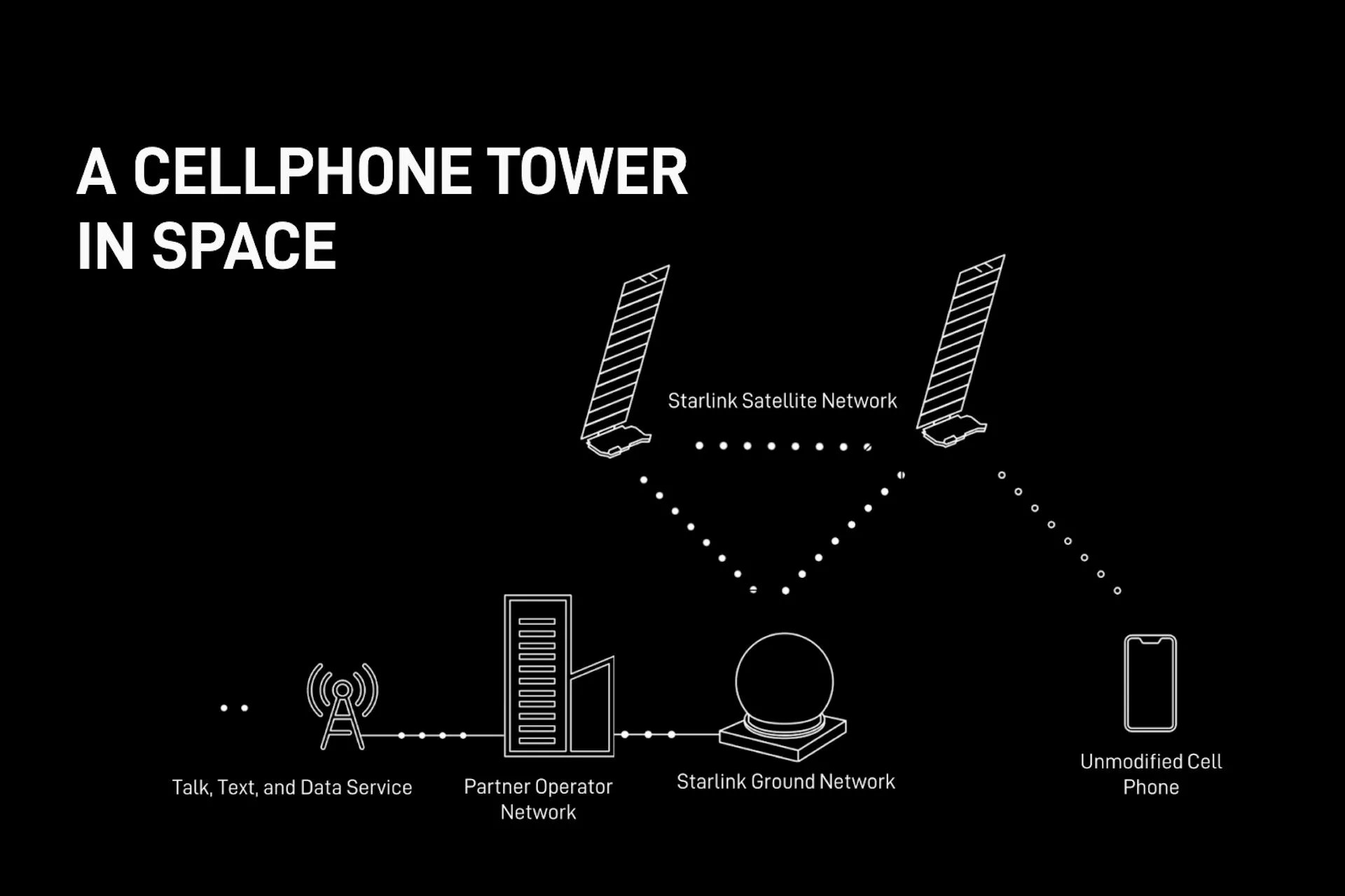At the end of the first week of January, SpaceX made an important announcement that will affect the further development of the telecommunications industry. After the launch of the first Starlink satellites capable of directly connecting to cellular phones into low Earth orbit at the beginning of this year, America’s most popular aerospace company announced the successful completion of initial network testing.
In a working document published on the SpaceX website, the company reports that it has conducted successful sessions of sending and receiving text messages using phones connected to Starlink satellites. The company also provided details on the development of the cellular project that SpaceX is implementing together with T-Mobile.
Details about the system of direct connection of cellular phones to Starlink satellites – Starlink Direct to Cell
According to a document from SpaceX, the first text messages were sent from unmodified phones using the T-Mobile network and Starlink satellites. In the firm’s satellite network model, Starlink satellites receive and send data to the user on one end and SpaceX ground stations on the other. The ground stations complement the end user’s connection to the Internet servers, and the Starlink Direct to Cell service coverage provides T-Mobile with an additional communication channel between the SpaceX ground stations and the servers.
SpaceX’s network supports LTE connectivity, and in its working document the company explains that it had to fundamentally change the design of the antennas to be able to transmit LTE signals from space. At the same time, SpaceX had to make sure that the orbits of the satellites, their location relative to the Earth and the number of satellites intended to provide LTE signal coverage were ideal for the network to be “at the edge of physics” and the LTE quality was such that customers would not had reason to complain.
In the current year, SpaceX plans to continue testing the transmission of messages through Starlink LTE satellites. By 2025, the company plans to deploy a satellite group capable of supporting voice, data and Internet of Things (IoT) operations in low Earth orbit (LEO).
In order to be able to transmit and receive test messages on an unmodified phone via a LEO satellite, SpaceX had to solve the problem of sending high-power signals from the spacecraft while maintaining power management within the confines of a small satellite. Larger satellites – particularly those placed in geostationary orbits – are significantly larger than a typical Starlink satellite and capable of sending large amounts of data.
For power management, SpaceX has developed a “custom chip” that is made exclusively for Starlink satellites that can connect directly to cellular phones. The company has also “developed large state-of-the-art 2.7m x 2.3m phased array arrays that use highly sensitive radio receivers and powerful transmitters to connect to cellular phones from space.” Phased array technology is one of the most advanced communications technologies in the world, and is currently used in a variety of devices – such as fighter jet radars.
One of the biggest advantages of Starlink’s direct cell phone to satellite system is that it has been designed to use LTE/4G protocols. This makes the service available on any smartphone with appropriate modems or receivers. To provide LTE connectivity to satellite cellular communications, SpaceX has also installed an LTE modem on each of its satellites capable of connecting directly to cellular phones.
In parallel with the development of the partnership with T-Mobile , SpaceX also encourages participation in the project of communication operators from Canada, Japan, Australia and other countries. Customers of these carriers will be able to use Starlink’s direct cell phone service anywhere there is signal coverage from any of SpaceX’s partners.
Source: https://mediasat.info/
